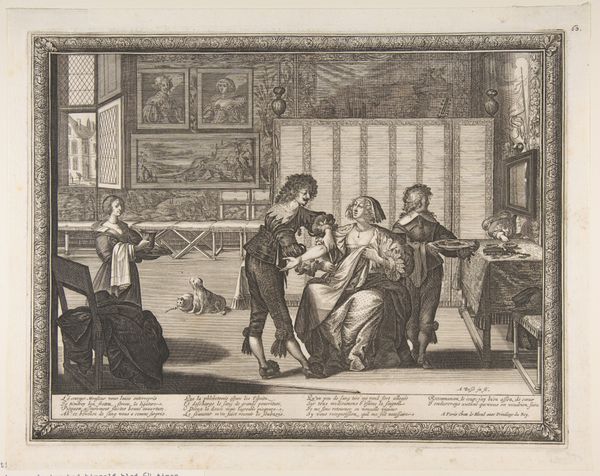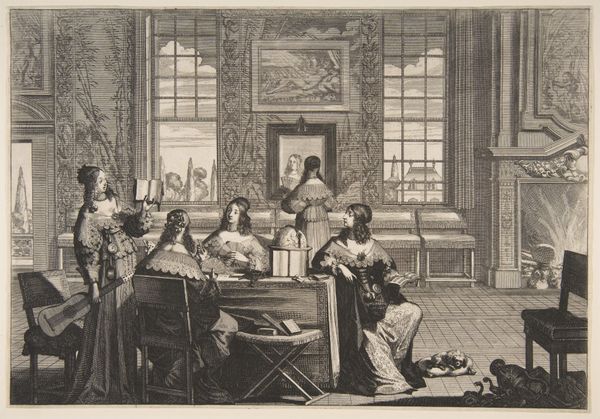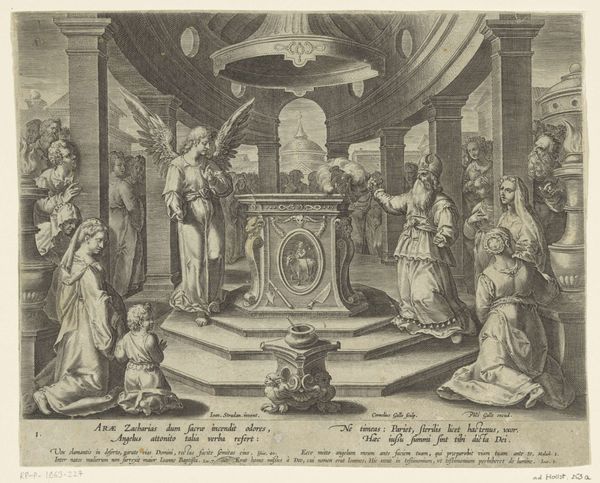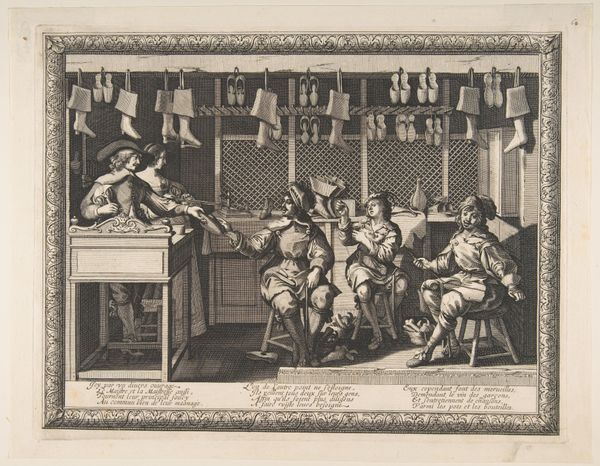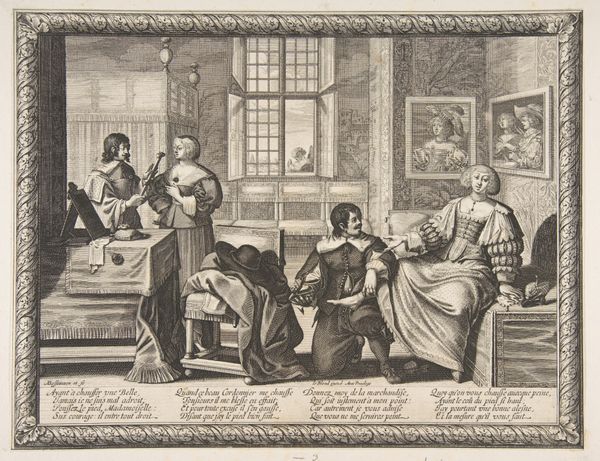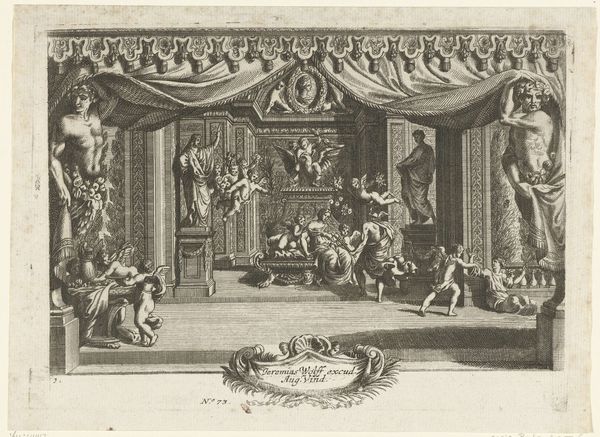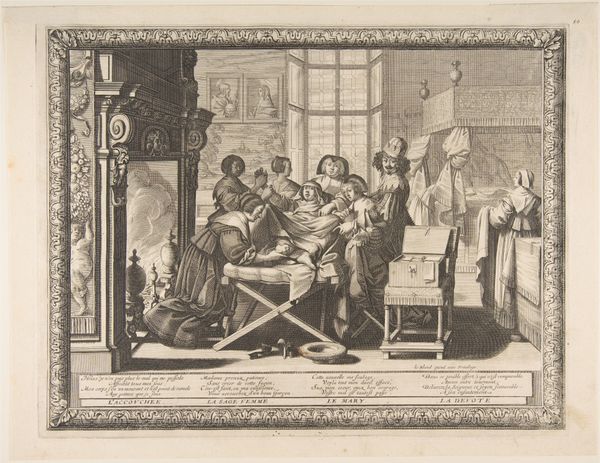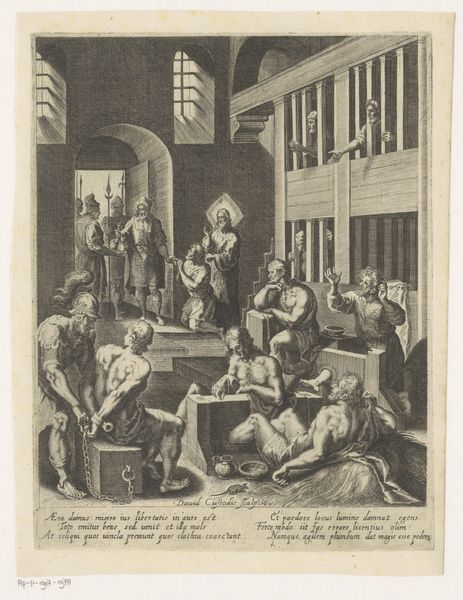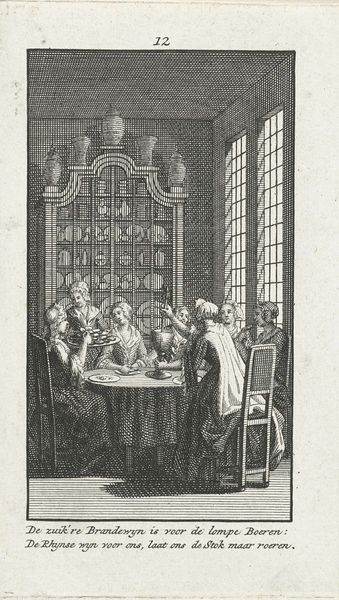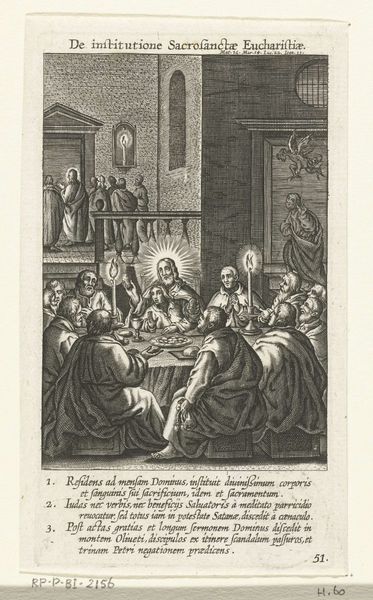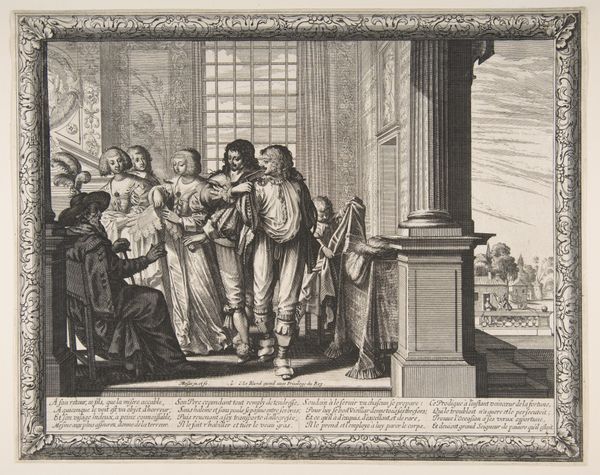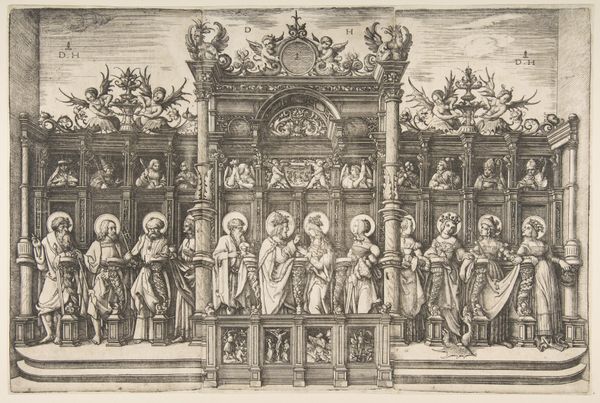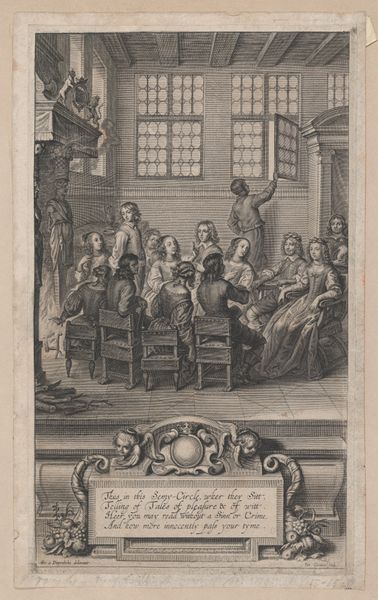
drawing, print, engraving
#
drawing
#
baroque
# print
#
group-portraits
#
genre-painting
#
engraving
Dimensions: Sheet (trimmed): 9 in. × 12 13/16 in. (22.8 × 32.6 cm)
Copyright: Public Domain
Curator: Let’s turn our attention to Abraham Bosse’s print, "The Wise Virgins Conversing," dating from about 1630 to 1640. Editor: What immediately strikes me is the crisp linearity, a quality inherent in engravings. Notice the precisely etched lines that define the contours and forms, creating a highly detailed interior scene bathed in light. Curator: Indeed. Beyond its aesthetic qualities, I read it as a window into 17th-century social dynamics, offering us a glimpse into the intellectual lives of women during that era. Were these women simply engaging in pious discourse, or does the very act of portraying them as intellectual agents disrupt societal norms of the time? Editor: The symmetry is quite deliberate; look at how the artist balances the figures around the central table with the Bible and crucifix. It invites us to study how Bosse has crafted this interior space. Semiotics suggests that everything in this image is imbued with meaning. The placement of objects—the book, the cross, even the silver ewer—carries weight, adding to the overall composition. Curator: It's fascinating to note how faith is articulated within the domestic sphere. Were these women religious figures of some sort? Or just pious? Bosse positions them in a space that would have been both private and a site of female power, enabling an articulation of religious knowledge outside the official, patriarchal church structures. Editor: I agree, it is hard not to recognize the clear structure and deliberate tonal modulations throughout, which offer clear spatial context clues in every corner of the print. Ultimately, it's the interplay between space, subject matter, and style. Curator: These engravings remind us how powerful art is—they preserve glimpses of cultural nuances and hint at complexities surrounding gender, class, and intellect, even across centuries. Editor: Precisely, it leaves us contemplating the technical brilliance and historical context of this deceptively complex artwork.
Comments
No comments
Be the first to comment and join the conversation on the ultimate creative platform.
